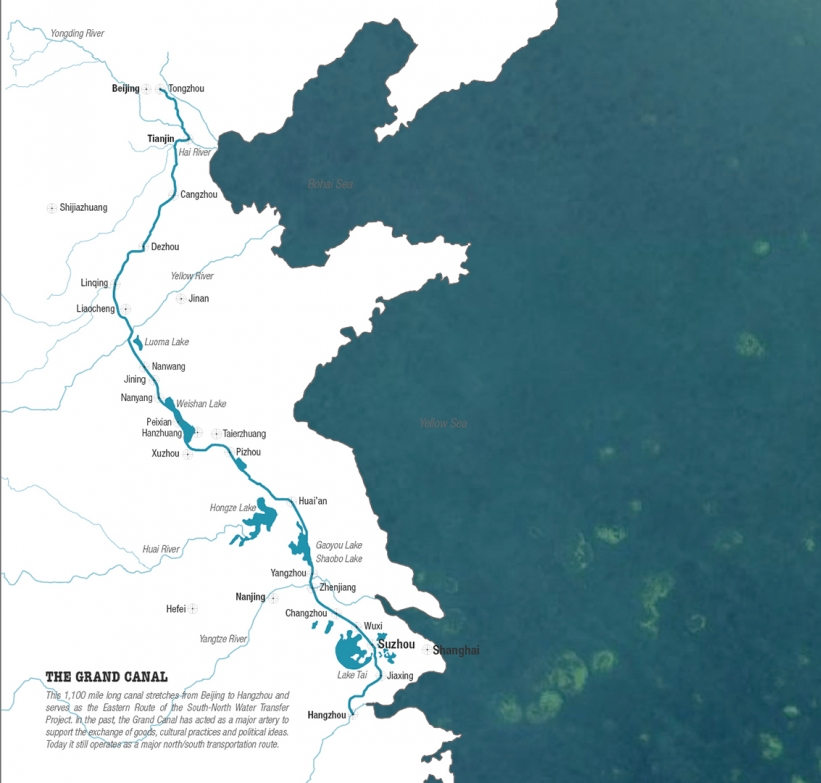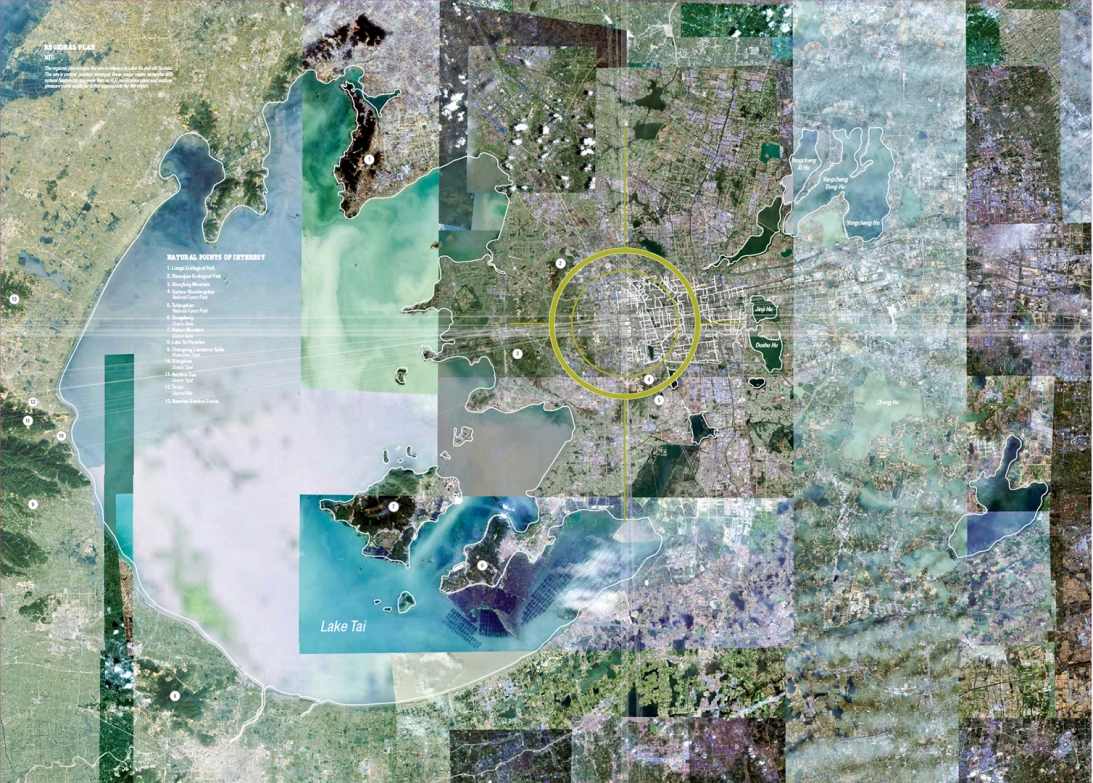505b Graduate Design Studio: Mario Gandelsonas
MUNICIPAL MANUFACTURING aims to provide a new place in Suzhou for the purposes of water purification, food production and public pleasure. The design operates on a variety of scales, ranging from the individual, to the household, to the neighborhood, to the community, to the city and to the region. These scales are accommodated through a number of interventions that address the needs of the local people. The design is implemented in three major phases, arranged by Initially purification infrastructure and pools are laid out. These devices provide opportunities to tap into ground water, collect rain water, intake canal water and store water transported from afar. Pools are classified according to water types and their degree of contamination (blue, green, grey, brown, black). The water content undergoes the natural filtration process and is eventually available to be tapped as a source for crop irrigation and drinking water.
Along with providing clean water, moments within this infrastructure encourages the growth of algae and phytoplankton. When farmed, these organisms provide an alternative source of energy in the form of biofuel. MUNICIPAL MANUFACTURING aims to transplant this natural annoyance from Lake Tai where it devastates to this new site where when under surveillance, it cultivates.
PHASE (2) Production
First, two main constituents related to the site are outlined and then coupled with a form of productive urban development according to the scope the constituent serves:
1) Residential Fabric (S scale) > Community Agricultural Gardens
2) Bus Stops (M scale) > Commercial Agricultural Gardens
The seeds of these community and commercial gardens are first planted at points within the site where the highest frequency of traffic takes place. Each garden zone contains at least one market space for the collecting, selling and redistribution of goods.
For the residential inhabitants, the community gardens provide the opportunity for residents to have an outdoor space of their own in an effort to supplement the inadequate existing conditions. Community garden zones are subdivided amongst residents, at which point the land is used for the individuals preferred purpose.
The commercial gardens are closely linked to the existing bus stops with the idea that these spaces will provide a point of production and purchase on a larger, public scale. Residents of the greater community may hop on and off the bus to pick up ingredients for dinner on their way to or from work. These gardens also operate on a regional level, acting as a point of agricultural production for the surrounding communities.
PHASE (3) Pleasure
Second, two more constituents defined and coupled with larger scale public programs:
3) Civic Fabric (L scale) > Public Parks
4) Subway Stops (XL scale) > Recreational Parks
Like the previous phase, these points are first implemented within the most highly trafficked zones of the site.
The public parks associated with the civic fabric operate like conventional public greens paces, with park benches, grassy meadows, trees and small ponds of water. These parks provide moments for the population, both local and transient, to have lunch and play in the park.
The recreational parks serve the greater population as they act as a destination point accessed by the existing bus subway system. These larger plots of pools and land serve the (FUN)ction of providing pure pleasure for the public in the form of water and amusement parks. The recreational parks make Suzhou a major transportation and entertainment node, bridging the gaps between Lake Tai in the west and Shanghai in the east.









